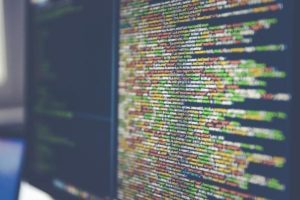There’s no question that data is becoming increasingly important in business. We rely on it to make decisions big and small, from marketing to production changes. But what happens when the data we’re using is spread out across different platforms? That’s where data linking comes in.
Data linking is the process of connecting data from different sources so that it can be analyzed together. This can be done manually, but there are also a number of software programs that can help. If you’re interested in getting started with data linking, keep reading. We’ll walk you through the basics of what you need to know.
Determine why you need to link data from various sources
Linking data is a process that allows researchers to combine information from different data sets in order to answer complex questions. This can be done for market research, community research, and a variety of other purposes. By linking data sets, researchers can gain a more complete understanding of the phenomena they are studying. So, the first step is to determine what your organization is trying to achieve.
One of the advantages of linking data is that it can help researchers identify patterns that they may not have been able to find by looking at the data sets separately. In the market research field, for example, linking data can help researchers understand how different product categories, such as automobiles or appliances, interact with each other. This can be done by combining data on consumer spending with data on product sales. By doing this, researchers can identify which product categories are most likely to be purchased together.
There are various other ways that linking data can be used to achieve organizational objectives. The key is to identify what you are trying to achieve and then find the best data sets to help you accomplish your goals.
Gain approval to start the data linkage process

Obtaining approval from data custodians for use of the data is an important part of data linkage. This process involves explaining why your organization needs this data, how it will be used, and for what purpose. The approval will go through an ethics committee that will approve or deny the request based on these factors and whether the data will be safe in your organization’s hands. Once the request is approved and all parties are notified, the actual data linking process can begin.
Extract and compile data from the various data sets

The process of data linking is extremely important for researchers as it allows them to connect the data of separate individuals across all data sets. This process is done by extracting the data needed from the different data custodians and running it through advanced computer software. There are several ways to link data, but one of the most popular ways is with a linkage key.
To link data using a linkage key, each individual is given a unique code which is called the linkage key. The individual is then de-identified, meaning that all personal identifiers are removed from the data. This process allows the researcher to study the data in a more detailed and comprehensive way. Finally, the linkage keys will be used later to connect the data across all data sets.
What are the other ways of linking data?

We’ve already covered linking data using a linkage key. However, there are several other ways that data sets can be linked, including a unique identifier, probabilistic linking, and statistical linking. Unique identifiers are assigned to each record in a set, and these identifiers are used to connect the data sets. Probabilistic linking uses information about the items in a set to create a link between the data sets. For example, if two data sets contain information about the same people, it is likely that the two sets are linked. Statistical linking uses information about the items in a data set to determine how likely it is that the sets are linked.
Linking data to find valuable insights
Now that you know the basics of data linking, you should have no trouble compiling data from various sets to gain insights. Remember to determine why you need data from various sets, gain approval, and link the data using one of the methods we’ve covered here.


